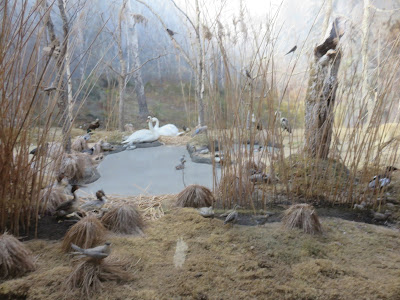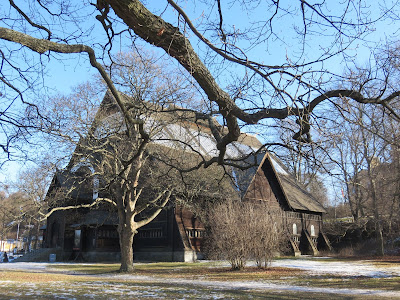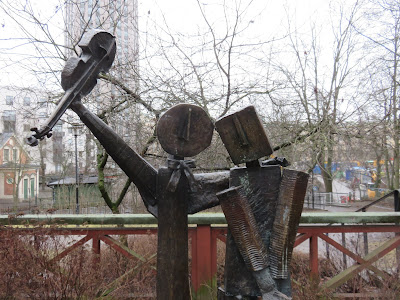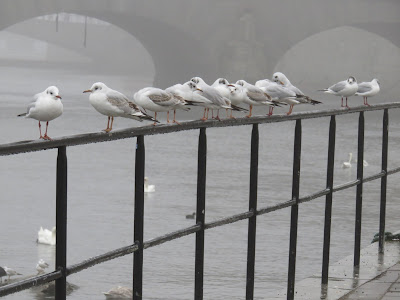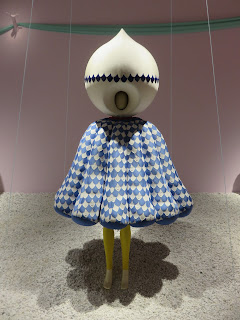I didn't choose Stockholm by throwing darts at a world map while blindfolded. (Considering my motor skills I should actually never be allowed near darts, especially not blindfolded.) I chose Sweden because it is the land of
Pippi,
Ronja and
Madicken. I heard rumours about great work ethics and I was attracted to the combination of an active cultural scene and beautiful nature. Plus, spoken Swedish sounds like a cheerful song.
Belgium and Sweden (or at least Stockholm) seem quite alike on the surface. When you dig a little deeper though, the differences start to show. It causes confusion, but it also offends people sometimes without you even noticing. I didn't fully realise this until I got Belgian visitors and was a bit annoyed by certain things they said and did which would not have bothered me a few months ago.
Most comments I get from Belgian people about Sweden are quite stereotypical:
"Jeutegreut smeurrebreud."
"Meatballs."
"Oh, your toes will freeze and fall off."
"Ah, Sweden, where everyone is blond, beautiful, and very tall!"
Well, nobody here says things like "Jeutegreut smeurrebreud." Furthermore, smeurrebreud, which is actually spelled
smørrebrød, is Danish. Meatballs are indeed a traditional Swedish dish, but certainly not the only thing they eat. So far I still have all my toes and I don't think I will lose any to frostbite. I brought plenty of socks.
Yes, everyone here is beautiful. (So is everyone everywhere else, though.) Perhaps the far less polluted air has something to do with it. It gives Swedish people's skins that natural healthy glow you normally need three layers of make up for in Belgium. I guess protecting forests and cutting back on cars is good for something, ey.
In general people here are indeed a lot taller than in Belgium. Rumour has it this is caused by a teeny tiny bit of Neanderthal gene. There is an entire row of cupboards in my kitchen I can't reach, not even when I stand on the little stool. And that time I went shopping for a skirt I felt like a gnome with unnaturally short legs after three shops.
 |
| Tall, taller and tallest. |
So what exactly is a Swede, then, according to Swedes themselves, and what sets them apart from other nationalities? Most Swedes apparently don't like to talk about the differences. When I ask, the answers are usually a bit evasive or they find a way around answering by talking about the things others claim about Sweden. A friend from Peru has had the same experience.
I did manage to have a conversation with my mentors about work ethics. Even though not every Swede enjoys a six hour workday like the media would like us to believe, the work atmosphere is different here and I have had some trouble adjusting to that mindset. My mentors don't understand why people in so many countries are forced to sit out the time until the clock strikes five, even when they are just sitting on facebook to kill time. If you're not going to work, then you might as well go home.
The same goes for being ill - into bed you go, and don't come back until you are completely better. They also have a lot more meetings than I am used to. I didn't understand at first. What can there possibly be to discuss all the time? But when you actually value everyone's input, no matter their function, it does make sense. It also ensures everyone is on the same level and everybody knows what's going on. It avoids so much unnecessary stress and frustration.

There are a few exceptions when it comes to talking about dissimilarities. Everyone is quite comfortable talking about how Danes are different from Swedes. According to my mentor, all Danes own an item of clothing that is completely made from leather. I have yet to find a Dane to confirm this. Comparing different regions of Sweden is also safe. There is, for example, an ongoing healthy dispute between Gothenburg and Stockholm.
The weather usually comes up as well, and Swedes don't seem to like their own country that much when it comes to the long, cold winters. They say I have come here at the worst time of year. I cannot agree though. Yes, it's cold; but that means you can dress cosily warm and see little kids run around in their adorable ski suits. The changing weather conditions also mean that I wake up in a completely new city every day. The lighting here changes so fast. It is no surprise that so many landscape artists travelled north.
 |
Swedish winter scene at the Armé museum
and a live winter scene at Kungsträdgården |
Vi ses
Cathy




